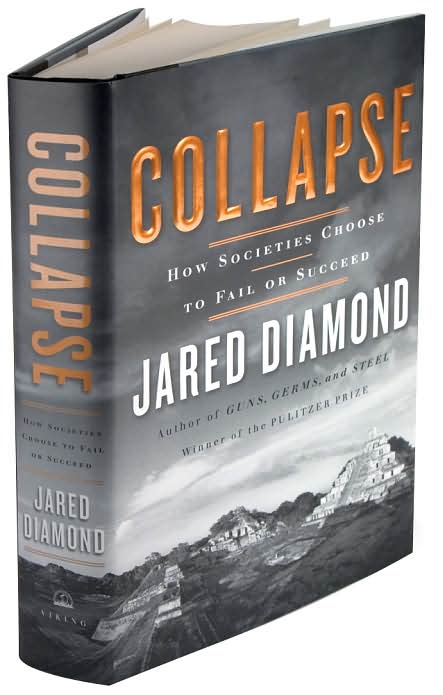
Like a lot of people, I am a regular reader of The New York Times. In fact, I break out in a rash when I don't get to read it on a daily basis. I love the on-line site which has innumerable features, but I am an abiding fan of the print version as well. I like being able to underline information as I read it and write in the margins of the paper. I clip photos because I find there to be quality of color that occurs when ink meets newsprint to be, occasionally, quite beautiful.
Of course, it is a time consuming occupation, this Times reading, but it is certainly rich in discovery and information. I wanted to share a few items that have captured my attention.
1. Jonathan Ruach's review of Judge Richard Posner's The Failure of Capitalism is deeply
 sobering. Posner is a federal judge who has written on a range of topics, including the power low-probability, high impact events (e.g., an asteroid hitting the Earth) in Catastrophe: Risk and Response. Unfortunately, these darned low-probability, high impact things keep happening. (Remember Condaleezza Rice' "Who could imagine that someone would crash an airplane into the World Trade Center?!") In the futures business, we call these sorts of possibilities critical uncertainties or wild cards, depending on how incredibly far out, yet still plausible, they seem.
sobering. Posner is a federal judge who has written on a range of topics, including the power low-probability, high impact events (e.g., an asteroid hitting the Earth) in Catastrophe: Risk and Response. Unfortunately, these darned low-probability, high impact things keep happening. (Remember Condaleezza Rice' "Who could imagine that someone would crash an airplane into the World Trade Center?!") In the futures business, we call these sorts of possibilities critical uncertainties or wild cards, depending on how incredibly far out, yet still plausible, they seem.I felt a little sheepish when Rauch, a guest scholar at Brookings, asserted that the reader "knows that story" when reciting the set of interlocking drivers that have created the current Great Recession/Minor League Depression, since I certainly hadn't seen it put together so succinctly. And, just in case you're as shell shocked and uninformed about the systemic picture as me, here it is: "Cheap money and an inrush of foreign capital fueled a lending boom, which poured credit into the housing market. As prices went up, up,up, even risky mortgages seemed safe and everyone piled in, including banks. Financiers relied on securitization and complicated financial instruments to dilute the attendant risk, but the result was to spread that risk through the financial system, making it impossible to locate. When the housing bubble popped, everyone was holding bad debt, but no one was sure how bad or even how much. With banks suddenly looking undercapitalized, lenders stopped lending and started selling assets to raise cash. The faster everyone ran for the exits, the faster asset prices fell, dragging banks' balance sheets down with them. Credit markets seized up, depressing the economy, causing more mortgage defaults and asset-price deflation, further weakening banks, further paralyzing credit, depressing the economy still more...repeat ad nauseam."
Posner's assertion is that this crisis "came about precisely because intelligent businesses and
 consumers follow market signals." In other words, the capitalist system, which believes in market driven self-regulation doesn't function in that way at all. In fact, the market of "an interrelated system of financial intermediaries is inherently unstable...[it is] a kind of epileptic, subject to unpredictable, strange seizures." Put a bunch of bankers in a low interest rate environment without a lot of regulation and economic depression will be the product. Ouch! It's not about irresponsible people. People made very rational and responsible choices under these conditions resulting in the fact that the overall world and US economies are going to be screwed for at least a couple of years.
consumers follow market signals." In other words, the capitalist system, which believes in market driven self-regulation doesn't function in that way at all. In fact, the market of "an interrelated system of financial intermediaries is inherently unstable...[it is] a kind of epileptic, subject to unpredictable, strange seizures." Put a bunch of bankers in a low interest rate environment without a lot of regulation and economic depression will be the product. Ouch! It's not about irresponsible people. People made very rational and responsible choices under these conditions resulting in the fact that the overall world and US economies are going to be screwed for at least a couple of years.Posner presents us with a very troubling dilemma: On the one hand, conditions of easy money and light regulation ought to be just what's needed to promote innovation in a capitalist economy. You should be able to get that without the credit system seizing up, but that's not what happened. And, to make matters worse, there aren't any easy answers: Socialism, too bureaucratic; Communism, death; Fascism, bad history. If liberal capitalism is the "end of history," I sure hope it doesn't have another heart attack anytime soon.
2. Here's a story that didn't come from The Times but is worth knowing about. The Russians Are
 Coming (to Facebook)! Art of the Future's principals have been using for the last few months with tremendous pleasure and with positive consequences in terms of making new friends and establishing new professional relationships. Facebook is a creative revelation. It is very easy to post material to one's sign, including video, and there are a virtually infinite number of groups of prospective interest.
Coming (to Facebook)! Art of the Future's principals have been using for the last few months with tremendous pleasure and with positive consequences in terms of making new friends and establishing new professional relationships. Facebook is a creative revelation. It is very easy to post material to one's sign, including video, and there are a virtually infinite number of groups of prospective interest.Facebook is great fun, and it is also a big business. For example, in 2007 Microsoft announced that it had purchased a
 1.6% share of Facebook for $240 million, giving Facebook a total implied value of around $15 billion at that time. Today, a Russian firm, Digital Sky Technologies, announced that it is seeking to purchase employee owned shares for between $100-150 million. This development strikes me as noteworthy, not only because it's indicative of the dynamic power of globalization--I mean, seriously, Russia, the supposedly re-emerging autocratic society becoming a stakeholder in Facebook, the sine qua non of open boundaries--but also because Russia has been so dismissed by authorities such as Parang Khanna, whose Second World is one of several books postulating the dismemberment of the Russian Federation. Maybe there's more to Russia than Putin and his natural resources strategy. We hope so.
1.6% share of Facebook for $240 million, giving Facebook a total implied value of around $15 billion at that time. Today, a Russian firm, Digital Sky Technologies, announced that it is seeking to purchase employee owned shares for between $100-150 million. This development strikes me as noteworthy, not only because it's indicative of the dynamic power of globalization--I mean, seriously, Russia, the supposedly re-emerging autocratic society becoming a stakeholder in Facebook, the sine qua non of open boundaries--but also because Russia has been so dismissed by authorities such as Parang Khanna, whose Second World is one of several books postulating the dismemberment of the Russian Federation. Maybe there's more to Russia than Putin and his natural resources strategy. We hope so.3. Get ready for either a really, really long weekend or complete servitude and irrelevance as The Singularity approaches. The Singularity is a concept coined by science fiction writer, Vernon
 Vinge, that asserts that supersmart computers will outstrip human intelligence sometime soon. The Big Bang was the original singularity, as far as I know. There was absolutely nothing and then--poof--there was suddenly something from which everything else has unfolded! So, this singularity business is a very big deal. The acceleration of technical innovation has placed us at "the edge of change comparable to the rise of human life on Earth." Some futurists, such as James John Bell, lay out the possibility that, beginning somewhere around 2025, everything that humanity has ever imagined may, in fact, be achievable virtually instantaneously via the advances that occurring in technology. The unique and beautiful film, Waking Life (which lays out something like thirty alternative philosophies reviewed and comprehended in the last minutes of a young man's life) includes a presentation of what this sort of hyper-telescopic evolution might look like, i.e., where something is envisioned and can, therefore, be subject to experimentation and experience immediately.
Vinge, that asserts that supersmart computers will outstrip human intelligence sometime soon. The Big Bang was the original singularity, as far as I know. There was absolutely nothing and then--poof--there was suddenly something from which everything else has unfolded! So, this singularity business is a very big deal. The acceleration of technical innovation has placed us at "the edge of change comparable to the rise of human life on Earth." Some futurists, such as James John Bell, lay out the possibility that, beginning somewhere around 2025, everything that humanity has ever imagined may, in fact, be achievable virtually instantaneously via the advances that occurring in technology. The unique and beautiful film, Waking Life (which lays out something like thirty alternative philosophies reviewed and comprehended in the last minutes of a young man's life) includes a presentation of what this sort of hyper-telescopic evolution might look like, i.e., where something is envisioned and can, therefore, be subject to experimentation and experience immediately.The Singularity is the epitome of what people mean when they say, "This is the stuff of science fiction." However, there is considerable reason to believe that what never seemed possible previously, e.g., the prospect that we could transcend mortality and never have to "work," in the way that we presently conceive of that process, or that we are inventing technologies that will come to rule us (and not necessarily in a nice way; reference: The Matrix),
The point for Art of the Future is that these sorts of considerations are virtually off the radar screen when it comes to typical strategic planning processes. Very real and indescribably huge forces shaping the future are often met with such a sense of powerlessness that they are not included in an organization's strategic conversations. The more that is true, the more the overall direction and meaning of all of the technological innovation that is occurring will be left to the very few people who do actually think about "Big Issues." Therefore, the perspectives enunciated by elites, the Best and the Brightest of whatever generation, will demarcate the terms of the conversation.Often , that is not a good thing. It means millions of intelligent and concerned people and organizations around the world won't be thinking together about where our technologies are taking us. So, if the Singularity (or any of its near relatives) breaks into reality, the highest probability is that most people will be completely paralyzed in shock, fear and awe by its effects. They'll have never thought about it, let alone have discussed its organizational consequences. This is a recipe for a lot of distressed people and broken, useless organizations.
Art of the Future's mission is to support the evolution of life sustaining work environments that support creativity and the ability of organizations to survive and thrive in many different social-economic contexts. We are not necessarily adherents to the Singularity hypothesis, but we definitely believe that organizations that want to build powerfully compelling work environments need to incorporate logically presented, unconventional views into their strategic analyses to do justice to the full scope of possibilities that are shaping what work will be, how it will be done and where it will occur.











